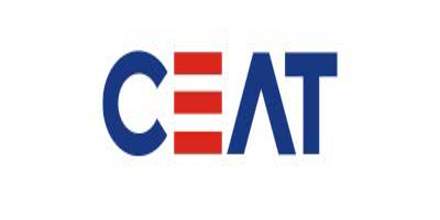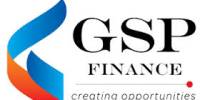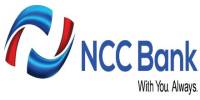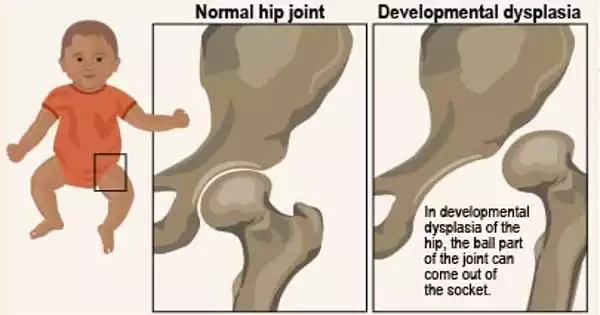Vat-Tax Payment System of CEAT Bangladesh Limited
This report provides an analysis of entire tyre market of Bangladesh perspective of CEAT Bangladesh Limited. CEAT Bangladesh Limited turning to establish themselves as a leading brand, currently they arein growth position. In Bangladesh mostly focused on truck-bus tyre segment. At present CEAT’splacement expend to five different region likes- Dhaka, Bogra, Chittagong, Sylhet, Jossore.Mother warehouse located at Chittagong, main distribution operating from there.
CEAT Bangladesh Limited is a valued corporate taxpayer of National Board of Revenue (NBR). It manages a competent system of TAX and VAT payment under the direct surveillance of the Head of Finance and Accounts Division.
Introduction
CEAT Ltd. is considered to be the second largest tyre manufacturing company in India. The organization has emerged its excellence in manufacturing various types of tyre, liketruck, bus, passenger car, bike, scooter and LCV (Light Commercial Vehicles). Not only tyres, CEAT also market tubes & flaps. CEAT International was first established in 1924 at Turino in Italy. Back at that time they used to manufacture cables for telephones and railways. In 1958, CEAT planned to come to India. As a process, CEAT International collaborated with TATA Group and founded CEAT India Limited. Later in 1982, RPG Enterprise took over CEAT India Limited, and in 1990, they renamed the company CEAT Ltd. Today, CEAT has 6 tyre manufacturing plants across the India and have market share of 25% – 30% individually in Indian tyre market and more than 3500 Cr annual turnover. Now CEAT is exporting in USA, Africa, America, Australia and other parts of Asia. It has 37 regional offices, 8 Zones, over 3,500 dealers and more than 100 C&F (Clearing & Forwarding) agents.
CEAT manufactures over 6 million tyres every year. It also has expert and dedicated customer service officers with customer service managers in all four divisional offices, assisted by 50 service engineers. In the fiscal year of 2010, CEAT did a good job in posting 21% overall sales growth in there placement market for truck & bus tyres.
CEAT started their operation in Bangladesh by joint venture with A.K Khan in 2012. It is onethe of first leading multinational tyre manufacturing company who are building a factory plant at Bhaluka, Maymensigh to produce heavy duty trucks & buses bias tyres included other segmentbias tyres. The Company is setting up a green field facility for manufacture of automotive bias tyres in Bangladesh with an initial capacity of 65 MT per day by investing USD 55 million. The capacity of the said plant will be scaled to 110 MT per day in due course with an additional investment of USD 15 million. This plant, which is the first major investment for tyre manufacturing in Bangladesh, is expected to become operational by early 2015. The Company has decided to implement the project as a joint venture and accordingly, has signed a Joint Venture (JV) agreement with A.K. Khan & Company Limited (AKK), one of the leading business groups of Bangladesh and CEAT Bangladesh Limited, the JV Company, during the year under review. While the Company will hold 70 per cent shareholding of the JV Company, AKK will hold the balance. The Company has also signed the Technology, Trademark and Name License Agreement with the JV Company where under, it will provide the technology and operational support to the JV Company. Once the plant becomes operational, the JV Company will be in a position to cater to the growing domestic market of Bangladesh and South East Asia as well. The JV Company has already commenced seed marketing of the „CEAT‟ branded tyres in the domestic market.
Tyre industry of Bangladesh has been expanded in recent years. Over the last few years, the number of tyre companies has increased and thus many foreign companies have entered in to the market such as MRF, Apolo, JK Tyre, Birla, Maxxis etc. As a result, the competitive environment has further been intensified due to this. Although Bangladesh does not have enough raw materials such as carbon, rubber, chemical and yarn for making tyres, it is still a good segment to capture as the country has a growing market for cross-ply tyres. Side by side with the foreign companies, local companies have moved to make tyres for long-haul buses and trucks, a sector that is dominated by imports. Gazityre, a concern of Gazi Group, is the first to make large tyres for the rapidly growing transport sector. Initially they are doing it on trial basis but soon they will start commercial production. At present four local companies are making light automotive tyres, taking advantage of a surging market that fully relied on imports a decade ago.
These companies- Apex Husain, Gazi Group, Meghna Group and RupshaTyremanufacture three tyres for light trucks, mini buses, micro buses, motor cycles, auto rickshaws and easy bikes. Some other companies such as Seraj Cycle, Anwar Group and Update Group are in the pipeline to make tyres for the local market.
Demand of tyres has been increasing, driven by the growing urban population and use of motorized vehicle across Bangladesh. Monthly demand of motor cycle tyre has increased to 50,000 pieces at present, up by over 15 percent from the previous year. The market size for CNG-run three wheelers has gone up to 60,000 tyres a month. However, Nosimons and Korimons, locally made three-wheeler small vehicles that run in the villages across the country, has also driven demand for tyres; nearly 20,000 tyres for these vehicles are sold a month.Despite high demand for large tyres, the big local companies did not make an entry into the sector, as it requires large capital investment and consistent power supply.
Almost a decade ago, two big names- Rahimafrooz and Nitol, moved to produce automotive tyres, but their plans fell through for high capital investment requirements and dependence on the import of the raw materials. India‟s JK Tyre also tried to set up a joint venture in order to manufacture tyres in Bangladesh. According to Bangladesh Road Transport Authority, 54,492motorized vehicles were registered in Dhaka in 2013 alone; the number was 137,109 countrywide.
Bangladesh spends around Taka 1,000 crore to import over 15 lakh pieces of tyres a year, mainly from India, Japan and China, according to importers, distributors and sellers. Bangladesh also imports tyres from Vietnam, Thailand and Indonesia. But now local companies are grabbing the market of a particular segment light automotive tyre which used to depend on imports a decade ago.
As the competition is increasing, thus it has become a high concern for both the local and foreign companies to stay alive in the market and grab the maximum market share by making customers more loyal to their firms. With the growing number of companies, the bargaining power of the customers are getting stronger and building trust and positive image has become even more crucial. Companies are putting more effort to understand the factors that shaping the perception of the customers and making them satisfied. As a matter of fact, the objective of the study is set to establish a framework which will identify that what are the factors that are making the dealers and customers satisfied.
Mission and Vision
To be amongst the most profitable tyre companies in India by 2016 through:
- Market Leadership in select categories in India.
- Market Leadership in significant countries outside India.
Objectives
CEAT has decided to expand its business and thus they intended to enter into Bangladesh tyre market. It is going to establish a manufacturing unit at Bhaluka, Mymensingh that will start its productions from March 2015 (approx.). During this period, the main task of CEAT will be the need of constructing a strong brand image of its own. For this purpose, CEAT is prioritizing heavily on the marketing and advertising activities which will progressively help CEAT to establish a strong hold in the Bangladesh tyre market. The primary objective is to create Brand awareness among the target customer group and to build up a good perception in their minds.
Values
- Challenger: CEAT always attempts to try new things and never fears failure. „We question existing ways of working and we are open to critique and suggestions from the team and others in the organization‟. This is what every CEAT employee believes.
- Aspiration-led: CEAT encourages their people to dare to dream. And their aim is to deliver exceptional service to their customers. Thus they try to do it by excelling at their work.
- Integrity: CEAT take responsibility for its actions and ensures that the behavior matches with their words. Being honest and transparent in their work is their continuous endeavor.
- Result-obsession: CEAT respects the time of others and strive to display a sense of urgency in taking decisions.
- Openness: CEAT values the skills, strengths and views of others and has a passion for learning and sharing ideas. The employees appreciate and are responsible with the information the company shares with them.
Safer and Smarter
R&d initiatives
To deliver better safety, CEAT have consistently worked in CEAT Research and Development (R&D) facilities. CEAT Quality Function Deployment (QFD) process not only introduces new products in the market considering the stated and unstated customer requirements, but also ensures the safety of the customers through better quality.
Quality Control Measures
CEAT Indians first tyre manufacturing organization to get the ISO/TS 16949:2002 certification by the International Automotive Task Force (IATF) and Japan Automobile Manufacturers Association (JAMA) for quality management. It’s Quality Management System with advanced technologies and modern design tools develop, test and process our products. Besides preventing defects and reducing waste, the quality control measures make our products safer.
Core Values
- Create customer value.
- Ensure dealer profitability.
- Professional and transparent dealing.
- Mutual respect between dealer and customers.
CEAT’s Commitments Towards Customers
- Ensure Value for Customers.
- Ensure to provide High Quality Premium tyres always.
- Ensure transparent business policy and clear communication.
- Three years warranty for all manufacturing defects.
- Claim settlement directly from company in Bangladesh.
- Dedicated CEAT sales and service team at customers‟ doorstep.
- Committed to provide best services all the times.
Products Offered by CEAT
CEAT manufactures wide range of tyres for its target customers that cover various segments in India-
- Heavy-duty Trucks and Buses
- Light Commercial Vehicles
- Tractors
- Trailers
- Cars
- Motorcycles
- Scooters and Auto-rickshaws
But in Bangladesh they are mainly concentrating on Heavy-duty Truck & Bus tyre.
CEAT’s Research and Development
Behind every successful product is a great research and development effort. At CEAT, ‘long distance’ is not just a term, it is the way they think and plan. Every innovative step is toward giving the customer a high-end product. Their research people are doing a great job at that since 1984. Every tyre that leaves our facility has been tried and tested for best performance, They also have the approval of the Department of Scientific and Industrial Research (DSIR) on that, Aided by modern design tools they can develop, test and process their products within a shorttime span. With this they are able to introduce better products to keep up with the evolving market needs. CEAT has always been avid propagators of advanced technology and with good reason. High tech processes enable them to presume the customers’ needs and simulate their on the-road experience, to create the perfect product.
Human Resource
CEAT believes that its employees are a valuable asset and core strength of the Company. The Company continued its focus on developing and nurturing talent and encouraging innovation and excellence. The Company has adopted Total Quality Management and initiated several measures for strengthening employee relations through progressive people practices at the shop floor and initiatives towards increased productivity. Labor relations remained cordial during the year under review.
Internal Control Systems and Their Adequacy
At CEAT, internal control systems play a critical role. Well defined organizational structure and authority matrix, documented policy guidelines, extensive internal audits and regular management reviews ensure the Company’s compliance with internal policies, applicable laws and regulations and protection of resources. To further strengthen transparency and strict adherence of the internal control system, CEAT has adopted an Online Corporate Compliance Management System ‘Legatrix’, in association with Legasis Services Private Limited. ’Legatrix’ is a secure, sophisticated and easy to use IT enabled legal support solution, where the updated information system automates the required compliance management activities with IT integration, eliminating enterprise and operational risk related to compliances. The Company also organizes regular Management Committee meetings to discuss budgets and decide on the future action plans, based on key performance indicators and variance analysis. At each Board Meeting, operational reports are tabled after being discussed at Audit Committee Meetings.
Company Philosophy
The Company’s philosophy on Corporate Governance mirrors its belief that principles of transparency, fairness and accountability towards the stake holders are the pillars of a good governance system. The Company believes that the discipline of Corporate Governance pertains to systems, by which companies are directed and controlled, keeping in mind long-term interests of members, while respecting interests of other stakeholders and society at large. It aims to align interests of the Company with its members and other key stake holders.
Accordingly, this Company’s philosophy extends beyond what is being reported under this Report and it has been the Company’s constant endeavor to attain the highest levels of Corporate Governance. This Report is for compliance of Clause 49 of the Listing Agreement, which the Company has entered into with the Stock Exchanges.
Description and Analysis of VAT-TAX
Types of VAT-Tax
Tax Like all other organizations in the corporate sector of Bangladesh, CBL is one of the most respected corporate taxpayers of National Board of Revenue (NBR). CBL’s Taxpaying process consists of two categories. They are-
- Corporate Tax
- Source Tax
Corporate Tax- Many countries impose corporate tax, also called corporation tax or company tax, on the income or capital of some types of legal entities. The taxes may also be referred to as income tax or capital tax. Company income subject to tax is often determined much like taxable income for individuals. Generally, the tax is imposed on net profits. Like others, CBL pays its corporate Tax in four installments. However corporate Tax is calculated yearly, it is paid in each of the quarters of a year.
Source Tax- Tax deducted at source (TDS) is amount of tax getting deducted from the person (Employee/Deductee) by the person paying (Employer/Deductor). Under the process of TDS, Deductor is a person/company who is liable to deduct the Tax at source, from the payment being made to the party. Deductor is also termed as Employer in cases where the payments are in the form of Salaries. A tax deductor is also required to issue TDS certificate to the deductee within specified timed under section 203 of the I T Act. The con from the deductor, for the deduction and payment of the respective TDS amount to the bank, issued to the deductee is a TDS certificate. The deductee should produce the details of this certificate, during the regular assessment of income tax, to adjust the amount of TDS against the Tax payable by the deductee.
VAT
A value added tax (VAT) is a type of consumption tax that is placed on a product whenever value is added at a stage of production and at final sale. From the view of the buyer, it is a tax on the buying price. From that of the seller, value added tax only on the value added to a manufactured goods, material, or service, from an accounting point of view, by this stage of its manufacture or distribution. The manufacturer remits to the government the difference between these two amounts, and retains the rest for themselves to offset the taxes they had earlier paid on the inputs. The amount of value added tax that the user pays is the cost of the product, less any of the costs of materials used in the product that have already been taxed.
VAT is applicable to all domestic products and services with some exemptions. VAT is payable at the time of supply of goods and services. Tax returns are to be submitted on monthly or quarterly or half yearly basis as notified by the Government. For example when a television is built by a company in Europe the manufacturer is charged a value-added tax on all of the supplies they purchase for producing the television. Once the television reaches the shelf, the consumer who purchases it must pay the value-added tax that applies to him or her.
For the first time in 1991Value Added Tax was introduced in Bangladesh replacing Sales Tax and most of Excise Duties. Also that year the Value Added Tax Act, 1991 was enacted and started its journey from 10 July 1991. From that 10th July is observed as National VAT Day in Bangladesh. Within the journey of 23 years, Value added tax has become the biggest source of Government Revenue. Bangladesh earned about 56% of total tax revenue is VAT revenue in a year.
VAT is imposed on goods and services at import stage, manufacturing, wholesale and retails levels. A uniform VAT rate of 15 percent is applicable for both goods and services. However 15 percent VAT is applicable for all business or industrial units with an annual turnover of Taka 2 million and above. Turnover tax at the rate of 4 percent is enviable where annual turnover is less than Taka 2 million. Tax paid on inputs is creditable/adjustable against output tax. Export is exempt. Besides these rates, there are several reduced rates locally called Truncated Rate, in this case of goods and services producers and sellers face difficulties in availing VAT credit/adjustment facilities due to non availability of invoices from the sellers of input. In order to remove this operational difficulty fixed bases such as 10%, 25%, 30%, and 60% value addition is taken into account for calculation of VAT for a number of goods and services. In such circumstances net VAT rate for different rates of value addition comes to 1.5%, 2.25%, 4.5% and 9%. CBL.
VAT Expense
Vat Expense: VAT expense is mainly related with the expenditure. This is the VAT CBL cuts on the expenses it incurs through other vendors and suppliers. The payment they get is subject to VAT which is cut by the CBL according to the regulatory body. For example, if CBL receives a supply of food by a vendor, it will cut the VAT on the total bill of the vendor by 15%.
Audit and Inspection
Audit is one of the most important elements of Tax-VAT system. A team formed by LTU clarifies VAT-Tax related documents of every Corporate in this country in order to clarify if the statements are flawless. The audit process has some sequential steps which is followed one after one if any dispute arises. A sequence is followed in case of arousal of dispute. Those steps are described below-
Commencement of assessment
The LTU team inspects every year in order for clarifying the statements in search of dispute and if they succeed, they report to higher authority which initiates order for documentary support from the CBL.
Document submission
CBL has to submit all essential documents on the demand of LTU authority regarding the disagreement. If the dispute still remains, an appeal to the Deputy Commissioner of Tax comes in sequence for further process.
Petition to Deputy Commissioner of Tax
The DCT looks into the matter personally and gives his verdict at this stage of the process. If his verdict is not satisfactory enough for CBL, it qualifies for appearing to the next stage which involves the Commissioner of Tax in decisional role.
Petition to Commissioner of Tax
Depending on the documents and feedback from DCT, Commissioner of Tax gives his decision. If CBL does not get satisfied with his opinion, it may approach the tax tribunal with a certain fee to get an enhanced solution.
Petition to Tax tribunal
The Tax tribunal runs a thorough study on the issue and gives resolution of that issue. If CBL gets satisfied with that, it takes essential measures to obey the decision. If it does not accept the decision, it qualifies for filing a petition to Tax division of high court.
Petition to High court division
Tax division of High court provides the final decision on the issue in presence of CT, DCT and CBL personnel pertaining to the issue and that decision is incontestable by both tax authority and CBL. In some exceptions, that verdict is repeated with essential references if any comparable disagreement arises in future with the approval of CBL and regulatory body.
Payment System of Vat-Tax
NBR provides a guideline to help the banks at the time of paying Tax-VAT. All banks strictly follow that guideline provided by regulatory body. This guideline consists of many different categories of Tax and VAT with respective deadlines. Based on the category, Tax is paid in two manners. Those are
- Tax deducted at source
- Advance Tax
Tax deducted at source- Tax deducted at source is adjusted tax at the time of any payment makes to any supplier or vendor or salary of employees by any branch. In other word, if any branch of CBL makes any kind of payment which falls under the taxation, source tax will be deducted from that amount at that time.
Advance Tax- Every taxpayer is required to pay advance tax in four equal installments falling on 15th September; 15th December; 15th March and 15th June of each year if the latest assessed income exceeds Taka four lakh. Penalty is imposed for default in payment of any installment of advance tax. So that CBL submits to Tax-VAT authority. The payment system of Tax-VAT follows a certain method in CBL. The sequences are explained below-
- The tax-VAT is gathered in all branches of CBL.
- Then it is reserved in a precise GL which is linked to the server so that it can be monitored by the tax-VAT subdivision.
- Along with the collection of Tax-VAT, a report where all the particulars of the Tax-VAT are described also come from all branches to HO.
- Then the report is coordinated with its compilation of Tax-VAT. If any disagreement arises because of any disparity of the amount and explanation, it is investigated right away.
- Then the total compilation of tax-VAT and its computation is pooled by the HO in a method approved by BB. Tax-VAT authority requires the bank to classify tax-VAT based on precise tax zone.
- After preparing the statements and challan copies, the F&AD make appeal to Treasury to grant cheques.
- Treasury grants the cheques according to the claim and the cheques are paid to BB through treasury challan.
- The copy of challan is then provided to tax-VAT authority along with the statements.
Why Government Considering Online System of Tax-Vat Payment?
The reasons behind evolution of the system are explained below-
- The reports regarding Tax-VAT are generated in a tricky and time-consuming way which imposes hardship to a new employee to get used to the system.
- Providing tax-VAT challans to those from whom CBL collects tax-VAT are way too many in number due to which CBL spends mentionable amount of human resource as well as Organizations valuable resources and technological support.
- Some disputes arise between HO and branches due to the strictly prescribed manner by regulatory body regarding categorizing and compilation of tax-VAT reports.
- BB instructs to use custom made software to calculate and compile Tax-VAT when it is next to impossible to reap the full benefit from it for banks due to the complication regarding compilation of Tax-VAT because of the rigidity of regulatory body.
To sum up, the overall system of Tax-VAT often raise disputes which may produce nuisance, time killing, escalating need for human resource and so on. In this circumstance, CBL feels the necessity for introducing a fresh, improved, effort reducing structure which will help CBL cope up with the expansion of its business to the utmost promising degree.
General Objectives
The project aims to find out current tyre market situation in Bangladesh and provide a clear picture in front of the reader. CEAT Bangladesh LTD. is relatively new in this highly contested tyre industry of Bangladesh which is mostly dependent on import. The reasons behind this project are:
- What is nature of tyre industry in our country?
- How big the tyre industry in our country?
- The number of tyre companies operates in our country?
- Who are the market leaders?
- What are the current market shares among the companies?
Recommendation
The blessings of science and technology give us clue about the solution to overcome the drawbacks of the current system. This solution will engage the equipment more in the system to lessen human effort. To be understandable, the structure is explained below-
- The sum of Tax-VAT will be calculated and the report will be sent to HO from warehouse after every particular time phase.
- Then HO will merge it via software and also check the detail. As the entire system is run by software and server, so it is less prone to dispute.
- After compiling the entire Tax-VAT in a specific time phase, F&AD will call for fund to Treasury. Treasury will disburse it online to BB and also obtain a treasury challan online.
- BB will propel the statements to Tax-VAT authority where the feature of payment by CBL will be recorded and then they will notify CBL about the position of Tax-VAT.
This system eliminates effort of producing the statements, challan copies and giving out separate documents to customers and regulatory body.
The Govt. has already decided to automate and computerize the whole range of activities of Tax-VAT. Under the new system, all activities of VAT such as- Registration & Taxpayers service, Return filling, Query, Payment of taxes, refund, and calculation of VAT- everything will be done online. The taxpayers will be able to complete VAT related activities without visiting VAT office that ultimately results in better business and less cost. The new system aims to be a business friendly VAT system. As part of this initiative, the new VAT & SD Act, 2012 has been passed by the Parliament. The govt. is planning to implement the new VAT Law by 1st July, 2015. In order to adopt the new method of Tax-VAT, CBL should train its employees to work with the new system and substitute effort by technology. It will be a remarkable revolution for Tax-VAT system so far.
Conclusion
Bangladesh is one of the growing economies of this South Asian region. Bangladesh’s economy is growing on an average 6% percentage per year. Bangladesh has become second largest economy among the SARC and export reached to 30 billion dollar. To support and maintain the growth of the economy we need large amount vehicles. The tyre industry in Bangladesh has immense growth potential as economy is growing rapidly and demand of transportation vehicles are also increasing. The demand for the tyres are going up and up every year as more than 20000 thousand vehicles running in the Dhaka city alone. From this scenario we can get a glance of the growth potential of this industry. CEAT Bangladesh Ltd started its journey from 2012 and within very short period of time it has created position on the tyre market. It has expended its operation in five different regions. Tyre companies now are facing intense competitive pressure because of the globalization and technological advancement The experience of spending
The organization has given me a scope of functioning as a member of highly active team of professionals serving to the need of such global brand and has added to my competences of working under pressure and effectively maintaining all aspects of work environment. I have been given a great opportunity of developing a professional attitude which would certainly act on my benefit in my future career endeavors.
















